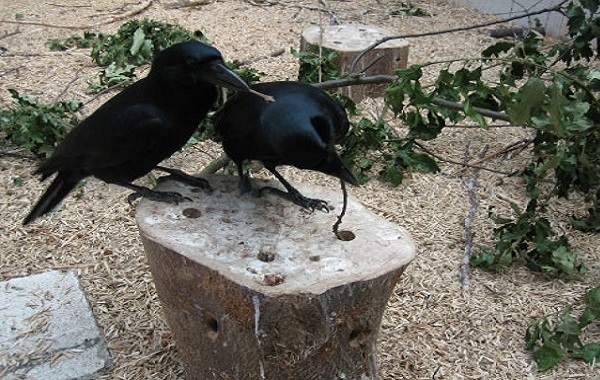Parenting. It’s Not Just For Humans Anymore
26 Ιανουαρίου 2017
It seems as if every other year there is a new manifesto about how to be a better parent: tiger mothers, helicopter fathers and Facebook parents have all hit the shelves. There is a constant race to do more with less.
Enter the New Caledonian crow.

When it comes to tool use, the crows inventiveness, complexity and sophistication stands well above the other tool using animals such as the bottle nose dolphins, chimpanzees, elephants and even the many armed octopi. Using more than sticks, stones and shells, crows seem to have no issue with compound tools with laboratory videos displaying birds doing things which initially appear artificial. The most famous example is a bird named Betty at Oxford University who selects a straight piece of wire, bends it against a plastic tube in order to make a hook and then uses the hook to pull a plug from the tube.
But what is it about the crows that give them the advantage against species often considered highly intelligent? Where do the elephants, chimpanzees and dolphins lose out? (Apologies to the octopus.)
Researchers at the University of Auckland have published reports in the journals Animal Behavior and Learning and Behavior suggesting the formula may not be that different from the parenting strategies of traditional human families: lead by example, provide a stable and loving home, indulge children from time to time, and keep an eye out for danger.
But if that’s the case, why don’t any of the approximately 700 other species of crows demonstrate the same behavior?
“It’s a big puzzle,” said Russell D. Gray, head of the Auckland lab. “Why them? Why is this species on a small island in the Pacific able to not just use but to manufacture a variety of tools, and in a flexible rather than a rote or programmatic way? Why are they able to do at least as well as chimpanzees on experiments of cognition that show an understanding of the physical properties of the world and an ability to generalize from one problem to the next?”
Corvids, the family from which New Caledonian crows came, developed 65 million years ago in the neighborhood of Australia so these modern crows did not travel far. In most respects they are an average sort of crow — 12 inches long, three quarters of a pound in weight and black from beak to vent. However their brain size stands out.
“All corvid brains are relatively big,” said Dr. Gray, “but preliminary evidence suggests that the New Caledonian brain is big even for corvids.”
Jennifer C. Holzhaider, the lead author on the two new reports, indicates studying the social structure and behavior of the crows and the details of their difficult daily lives, allows researchers new insights into how intelligence evolves, the relations between physical and social skillfulness, and how different needs relate to brain size.
There is no murder with these crows. Learning takes concentration. New Caledonian crows adhere to a nuclear family arrangement. Males and females pair bond year. They affirm their relationship as chimpanzees do by feeding and grooming each other. They sit close to each other. They share tools.
For young, two or more years with their parents is not unusual, although it is exceptionally long for most birds. They look for food together as a family. And it is all part of the training. Adolescents need an extended training period. For the first six months, they usually cannot begin to make a tool. And this is when parents help the young. They provide the opportunity for the young apprentice toolmakers to fail by bringing food and demonstrating how to hook slugs out of trees.
Positive reinforcement. It works for crows. And it works for people too.





